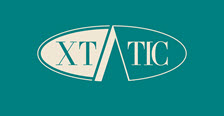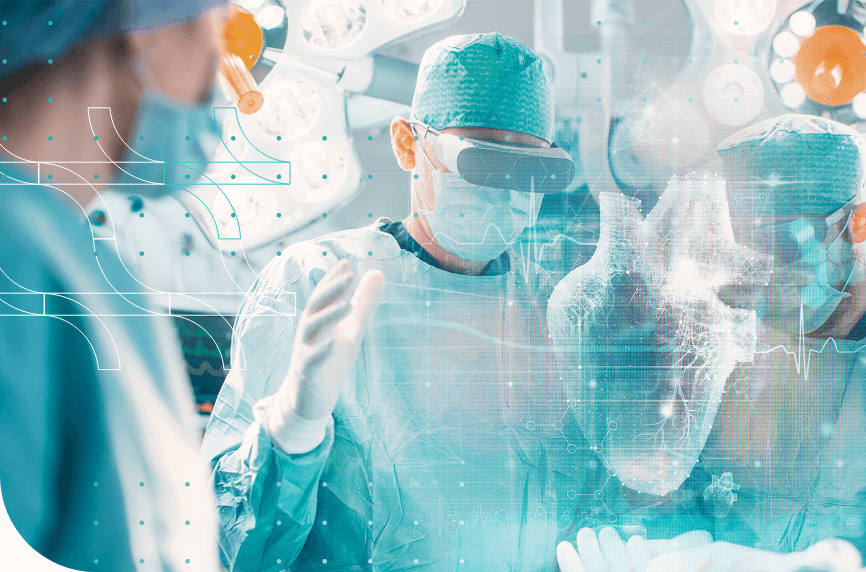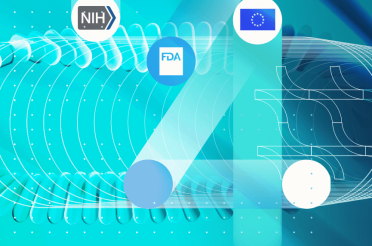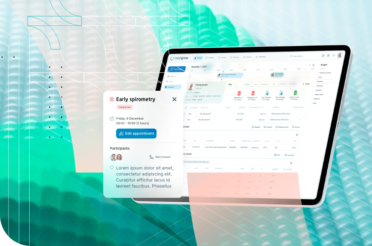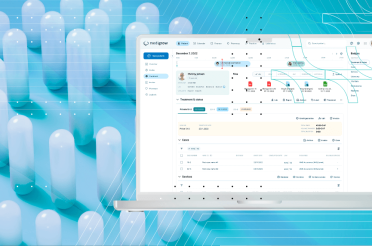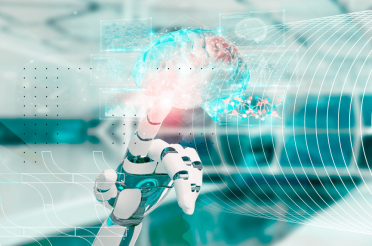The global extended reality (XR) market size reached $64.5 billion in 2022 and is expected to soar to $604.3 billion, according to the IMARC Group. The increasing adoption of XR in healthcare serves as a key contributor to the accelerating trend, showcasing the transformative impact of this technology across various industries.
As the healthcare industry continues to evolve, medical professionals are increasingly leveraging the benefits of XR in healthcare to enhance patient care, improve healthcare systems, and revolutionize the way medical procedures are conducted.
By embracing this cutting-edge technology, the healthcare sector is on the cusp of a transformative era that could dramatically improve health outcomes and patient experiences worldwide.
XR is transforming healthcare and revolutionizing patient care and medical procedures by providing immersive, interactive experiences. These technologies enable medical professionals to enhance diagnostic accuracy, improve surgical precision, and offer effective training and therapy options, ultimately leading to better health outcomes and patient experiences.
In this blog post, we will explore the future developments in extended reality technology for healthcare, discussing the advancements and innovations that are expected to drive this transformation.
Distinguishing between XR, VR, AR, and MR
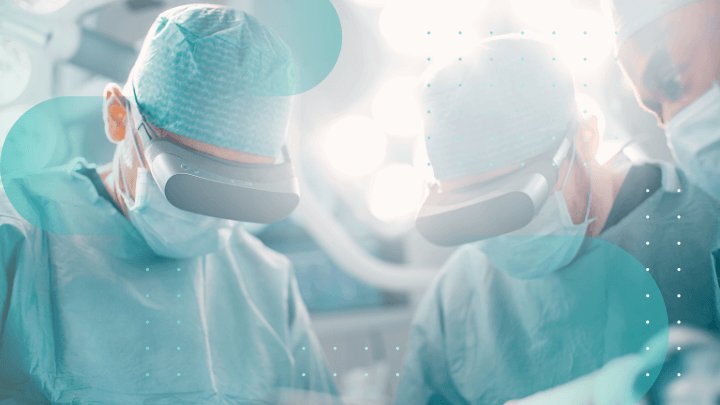
Before diving into the benefits of this innovative technology, let’s clarify the terminology:
- Extended reality is an umbrella term that encompasses all immersive technologies, including virtual reality (VR), augmented reality (AR), and mixed reality (MR). It generally refers to any technology that enhances or extends human experiences by blending the physical and digital worlds.
- Virtual reality is a fully immersive technology that transports users into a computer-generated environment, completely separate from the physical world. Users typically wear VR headsets, which cover their eyes and sometimes ears, providing a 360-degree visual and auditory experience. In VR, users can interact with the environment and objects using controllers, haptic devices, or hand tracking.
- Augmented reality is a technology that overlays digital content (such as images, videos, or 3D models) onto the user’s view of the real world. It enhances the user’s perception of their environment by adding context-specific information or virtual objects. Examples of AR devices include smartphones, tablets, and smart glasses.
- Mixed reality is a blend of virtual reality and augmented reality, where digital content interacts with the real-world environment in a more seamless manner. In MR, virtual objects are anchored to the physical environment and can be occluded by real-world objects, creating a more integrated experience. MR devices allow users to interact with both the physical and digital worlds simultaneously.
Benefits of VR and XR in healthcare
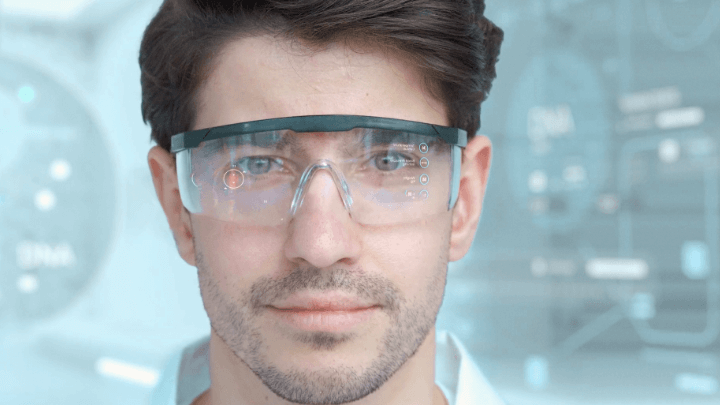
Patient outcomes
The application of extended reality technologies in healthcare has shown promising results in improving patient outcomes, and overall satisfaction. Here are some examples of how XR may help doctors treat patients more effectively.
Pain management
XR has also been shown to help adult patients remain calm and relaxed during surgery when under regional anesthesia in a hospital or clinical setting.

Discover all the benefits of VR and XR for your healthcare practice
Innovate your healthcare practice and step into the future with immersive VR and XR technology with the guidance of BGO Software’s experts

At St George’s Hospital in London, patients receiving regional anesthesia for their surgeries were offered the option to use a VR headset before and during the operation, which transported them to a soothing virtual space.
The results were remarkable: all participants reported that using the headset enhanced their overall hospital experience, 94 percent felt more at ease, and 80 percent experienced less physical pain. The patients were so engrossed in the virtual world that they were often unaware of being in the operating room.
Physical therapy and rehabilitation
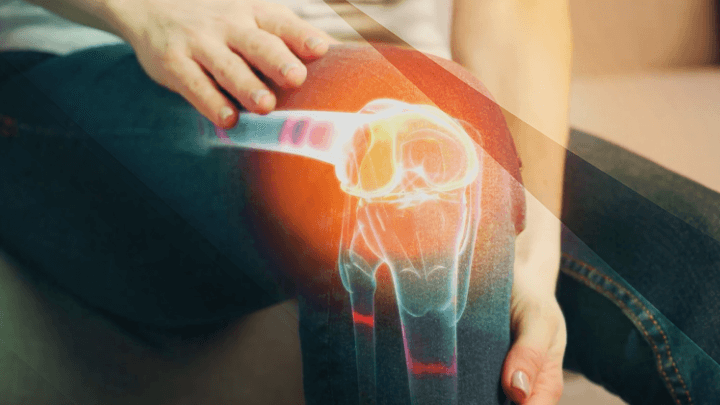
Imagine a world where physical therapy and rehabilitation become immersive, engaging, and even enjoyable experiences for patients. Welcome to the captivating realm of extended reality in physical therapy and rehabilitation!
By integrating these groundbreaking technologies, the landscape of physical therapy is being reimagined, offering innovative and interactive methods to help patients regain their strength, mobility, and independence. XR has the power to transport patients into stimulating virtual environments, enabling them to practice functional movements and exercises in a safe, controlled, and entertaining setting. These immersive experiences not only enhance patient motivation but also facilitate the tracking of progress and provide real-time feedback to both patients and therapists.
For instance, imagine a patient recovering from a stroke, struggling to regain control of their limbs. By adopting virtual reality, they can now practice reaching for virtual objects in a colorful, engaging world, all while receiving instant feedback on their performance. This gamified approach to therapy can significantly improve adherence to treatment plans and encourage patients to push their boundaries, ultimately accelerating their recovery process. Another example includes a 2019 systematic review and meta-analysis on the effect of VR-based therapy on patients with Parkinson’s disease. It concludes that VR may improve balance and walking abilities in patients with the disease.
Moreover, XR applications can be tailored to each patient’s body and unique needs, creating personalized therapy sessions that are both effective and enjoyable. By offering customizable virtual scenarios, therapists can address specific challenges faced by individual patients, enabling them to focus on their rehabilitation goals and progress at their own pace.
Mental health
Specific phobias
Individuals with specific phobias, such as fear of flying, heights, or spiders, can benefit from VR-based exposure therapy or similar mental health services. A therapist can gradually expose the patient to virtual scenarios that simulate the feared situation, helping them confront and eventually overcome their fear.
For example, a person with acrophobia (fear of heights) can experience standing on a virtual balcony or crossing a virtual bridge, gradually increasing the height and complexity of the scenarios as they become more comfortable.
Social anxiety disorder
People with social anxiety disorder can practice social interactions and public speaking in a controlled, virtual environment. Through VR-based exposure therapy, patients can engage in simulated conversations, attend virtual parties, or give presentations in front of virtual audiences, allowing them to develop coping strategies and build confidence in their communication skills.
Post-traumatic stress disorder (PTSD)
VR-based exposure therapy has been particularly useful in treating veterans and others who have experienced traumatic events.
Patients with PTSD can revisit and process their traumatic experiences in a safe, virtual environment, under the guidance of a therapist. For example, military veterans can be gradually exposed to virtual combat scenarios, helping them confront and process their traumatic memories.
Obsessive-compulsive disorder (OCD)
VR software can be used to expose individuals with OCD to situations that provoke their obsessions or compulsions, helping them practice cognitive-behavioral strategies to manage their symptoms.
For example, a person with contamination fears can be gradually exposed to virtual environments that simulate dirt or germs, allowing them to confront their fears and reduce their compulsive behaviors.
Medical imaging
Imagine a world where healthcare professionals can easily visualize, interpret, and interact with medical data like never before. With the power of VR solutions, we’re getting closer to making that dream a reality. These cutting-edge technologies are set to revolutionize diagnostic capabilities, surgical planning, and medical education.
Have you heard of the HoloLens?
This mixed reality device, developed by Microsoft, can create 3D holographic images from CT scans. This technology allows physicians to explore a patient’s anatomy in an incredibly intuitive way, opening up new possibilities for understanding and treating various medical conditions.
2D medical images based on traditional methods, such as CT scans, MRI, and ultrasound, might soon become 3D. VR technology can transform these flat images into stunning 3D models, giving healthcare professionals an in-depth and detailed view of a patient’s anatomy.
This game-changing approach can lead to improved diagnosis, more effective treatment planning, and enhanced patient education.
Medical education settings and training
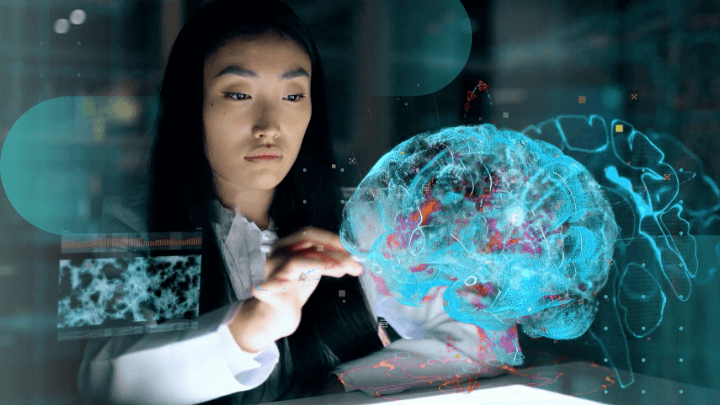
XR solutions are being increasingly used in medical training, providing immersive and interactive learning experiences that can enhance understanding and retention of complex medical concepts. These technologies can enhance traditional training methods and improve the development of practical skills by simulating real-life training scenarios and providing real-time feedback.

Become a pioneer in the healthcare sector with VR and XR solutions
Master immersive VR and XR technologies to redefine the experience of your patients under the expert guidance of BGO Software’s specialists
Here are some examples of how AR and VR can be utilized in virtual medical training:
- Anatomy education. They can help medical students visualize and explore the human body in 3D, promoting a better understanding of anatomical structures, their spatial relationships, and functions.
- Surgical simulation. AR and VR can be used for surgical training, offering a safe and controlled environment for medical students and residents to practice their skills and receive real-time feedback without risk to real patients.
- Clinical skills training. The immersive technologies can be used to teach and practice clinical skills such as patient examination, diagnostic reasoning, and communication.
- Emergency medical training. AR and VR can be used to simulate emergency situations, allowing medical professionals to practice their response and decision-making skills under realistic but controlled conditions.
Patient engagement and education
Ever wish you could help patients truly understand their anatomy and medical conditions? With XR, complex medical information becomes more accessible and easy to comprehend.
Take the “3D Organon Anatomy” app, for example. It uses VR to provide interactive, 3D visualizations of human anatomy, empowering patients to better understand their medical conditions and how they impact their bodies.
Wouldn’t it be great if we could alleviate patients’ anxiety by clearly explaining medical procedures and treatment plans? “Medical Realities” is a platform which uses VR to help patients grasp surgical procedures by offering immersive, 360-degree videos from the surgeon’s perspective.
This innovative approach gives patients a clear idea of what to expect during a procedure, reducing anxiety and promoting a better understanding of their treatment.
Challenges and limitations of XR technology
As promising as XR technologies are in healthcare, they come with their fair share of challenges and limitations. Let’s take a look at some of the hurdles we need to overcome to fully harness the potential of these latest healthcare technologies.
Cost concerns
Implementing XR can be pricey, especially when factoring in hardware, software development, and maintenance costs. Smaller healthcare institutions or those with limited budgets may find it difficult to adopt these technologies.
Technological limitations
The current state of XR technology may not offer the desired realism, precision, or interactivity for some medical applications. Graphics, tracking systems, and haptic feedback may still need improvements to accurately simulate specific medical situations or procedures.
Workflow integration woes
Fitting XR technologies into existing healthcare workflows can be a challenge. Adoption may require new hardware and software, along with changes to established protocols and practices, making seamless integration essential for success.
Accessibility and usability
Health professionals and patients have varying levels of comfort and experience with XR. Ensuring immersive reality tools are user-friendly, intuitive, and accessible to a diverse range of users is crucial for effective use in healthcare settings.
Data privacy and security
With the use of XR comes the responsibility of handling sensitive patient data. Healthcare institutions must adhere to data protection regulations and implement strong security measures to safeguard patient information.
Limited evidence base
While there are numerous studies evaluating XR in healthcare, more research is needed. Rigorous, large-scale, and long-term studies will ensure patient safety and help establish the effectiveness of these technologies in various healthcare applications.
Motion sickness and discomfort
Some users may experience motion sickness or discomfort when using XR technologies, which could limit their applicability to certain patient populations or medical applications.
Training and support
Healthcare professionals may need extra training to effectively use XR tools. Ongoing support and training resources are essential to ensure these professionals can make the most of these technologies.
Extended reality holds tremendous potential in healthcare, but we need to address several challenges to ensure their successful implementation and widespread adoption. Collaboration, ongoing research, and development are key to unlocking the full potential of these exciting tools in healthcare.
Future developments in VR and XR technology for healthcare
The adoption of XR in healthcare has been steadily increasing, showcasing various applications with the potential to transform the industry. Now we will present the additional advancements required to fully unlock the extensive possibilities of extended reality technologies.
Improved hardware and software
As technology advances, we can anticipate significant improvements in the quality and performance of VR devices. We can expect higher-resolution displays, more accurate tracking systems, and better haptic feedback, which will enable more realistic and immersive simulations.
These enhancements have the potential to boost the effectiveness of these tools in medical training, patient education, and therapeutic interventions, making them even more valuable to healthcare providers and patients alike.
Greater integration with other technologies
Future developments in VR and XR technology are likely to include more seamless integration with other healthcare tools, such as electronic health records (EHRs), medical imaging systems, and telemedicine platforms.
This integration will facilitate more efficient workflows, improved collaboration among healthcare professionals, and better continuity of care for patients, streamlining the overall healthcare process.
Personalized experiences
With advancements in artificial intelligence (AI) and machine learning, XR applications will soon be able to adapt to individual users’ needs and preferences. This will provide personalized experiences for medical training, patient education, and therapy, which can lead to improved engagement, retention, and overall effectiveness.
By tailoring these experiences to each user, healthcare providers can ensure that their patients receive the most relevant and engaging information, leading to better outcomes.
The proliferation of remote healthcare applications
As XR technologies become more widely available and accessible, their use in remote healthcare applications, such as telemedicine and remote patient monitoring, is likely to increase. This will help bridge gaps in access to care, particularly for patients in rural or underserved areas, enabling them to receive the care they need from the comfort of their own homes.
Expansion of therapeutic applications
As research continues to demonstrate the effectiveness of XR technologies in various therapeutic interventions, we can expect to see their use expand to address a wider range of mental illnesses, and neurological, and physical conditions. This will provide healthcare professionals with new, innovative tools to help their patients overcome challenges and improve their overall well-being.
Collaborative environments
Future developments in virtual reality technology may enable more interactive and collaborative virtual environments, where healthcare professionals can work together, share knowledge, and learn from one another in real time, regardless of their physical location. This has the potential to break down barriers in healthcare, fostering a more collaborative and connected community of professionals.
Gamification and engagement
The integration of gamification elements and immersive storytelling in XR applications can lead to increased engagement, motivation, and adherence to treatment plans, especially in rehabilitation and chronic disease management. By making healthcare experiences more enjoyable and engaging, patients may be more likely to stick to their treatment plans and achieve better outcomes.
Ethical considerations and guidelines
As the use of XR technologies in healthcare becomes more widespread, it is crucial to develop ethical guidelines and best practices for their use. This will ensure that these technologies are used responsibly, with due consideration given to patient privacy, data security, and the potential risks and benefits of their use.
In conclusion, XR technologies in the healthcare market hold immense potential for improving patient outcomes, medical training, and overall efficiency. However, the process also presents various risks and challenges, such as technological limitations, integration complexities, data privacy concerns, and the need for ongoing support and training.
To navigate these challenges effectively and responsibly, healthcare providers must collaborate with a trusted partner. By working closely with a software development company, healthcare organizations can ensure that the XR solutions they adopt are tailored to their unique needs, compliant with industry standards, and optimized for seamless integration with existing workflows.

Whether you’re a startup, a Fortune 100 company or a government organisation, our team can deliver a solution that works for you.
BGO Software
BGO Software, an industry leader, can provide valuable guidance and expertise in managing potential risks, ensuring that healthcare providers harness the full potential of XR technologies to enhance patient care and overall operations.
